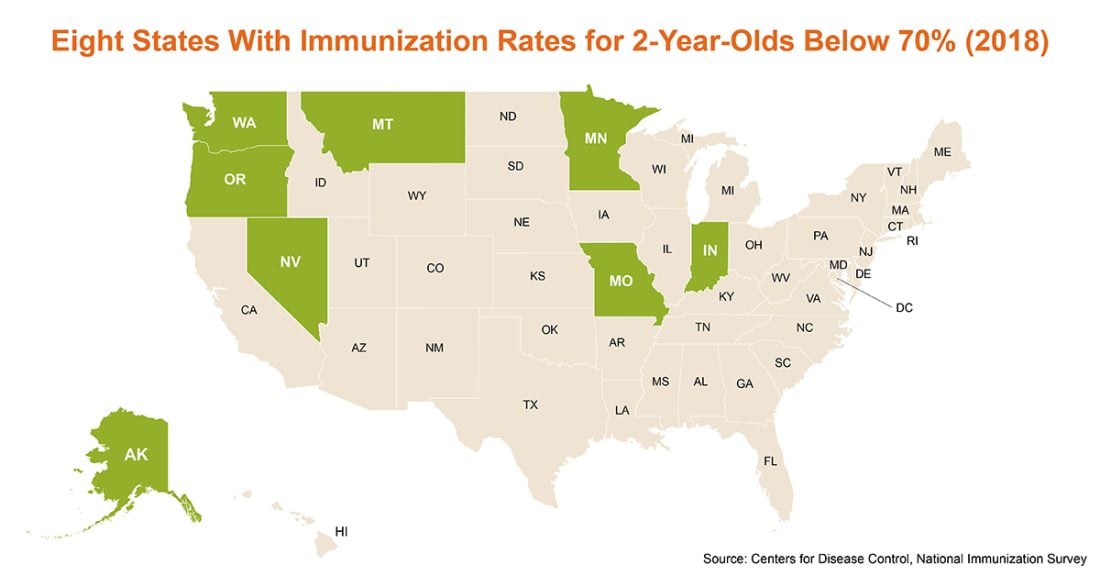Immunization Rates for Young Children Vary Across the States in 2018

Although some states showed declines in the most recent year for which data are available, a general trend of higher immunization rates for 2‑year-olds prevails in the United States.
According to the Centers for Disease Control and Prevention’s National Immunization Survey, in 2018, three-quarters of 2‑year-olds were immunized in America. The 2018 immunization rate (read more about how immunization is defined) climbed from 48.3% in 2009 (during a period of vaccine shortages) to 71% in 2011 to 75.1% in 2015. The latest national figure is nearly on par with that record level of immunization.
Immunization rates varied widely across the states, from a high of 85.4% in Connecticut to a low of 63.9% in Montana. There’s no strong geographic pattern related to either the 2018 immunization rate or year-to-year changes from 2017 to 2018:
- Alaska (69.7%), Indiana (66.9%), Minnesota (68.2%), Missouri (68.3%), Montana (63.9%), Nevada (68%), Oregon (68.9%) and Washington (66.1%) are the states with 2018 immunization rates below 70%; every geographic region is represented except the Northeast.
- Similarly, Alabama (81.8%), Colorado (81%), Connecticut (85.4%), Kentucky (81.3%), Massachusetts (82.6%), Nebraska (80.7%), New Hampshire (82.2%), New Mexico (80.3%), North Dakota (82.4%), Pennsylvania (80.7%) and Wisconsin (80.5%) are the states where the immunization rate topped 80%, with the Northeast, South, Midwest and West all represented by at least two states.
- Immunization rates fell in 19 states: Alaska, Delaware, Florida, Illinois, Indiana, Maryland, Massachusetts, Minnesota, Missouri, Montana, Nevada, Oregon, South Dakota, Tennessee, Virginia, Washington, West Virginia and Wyoming.
An important data caveat: Between December 2007 and September 2009, there was a shortage of the Hib vaccination, which led to a temporary suspension of the booster shot for most children. This explains a dip in in 2009 and 2010 in some places relative to previous years.






